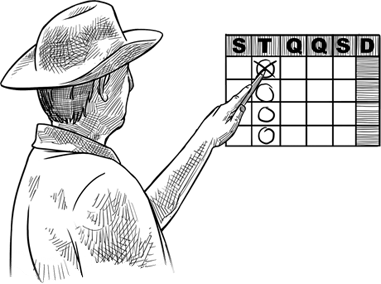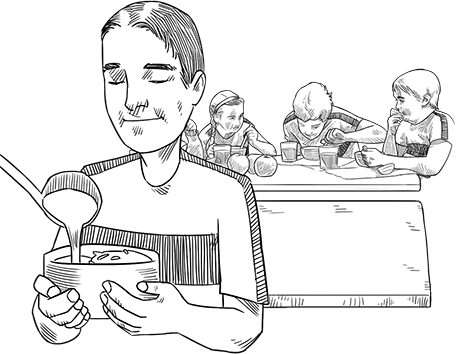What about smallholder farmers and public-school students? What does this insertion of smallholder farming in school feeding represent to them?
Among the benefits, we can state that:



- to the farmer, it represents an important channel for commercialization and regular profit generation, which allows them, besides constant planning, the certain possibility of taking over future commitments. All these factors contribute to a productive inclusion, more jobs in rural areas, and stimulates the creation of associations and corporations;
- for students, it is the guarantee of better-quality goods at schools, contributing to healthy eating habits and respect to culture and regional food practices.
Participation of smallholder farming in school feeding.
President of an association in a Quilombola community in the outskirts of Cidade Ocidental talks about the need of adjusting school menus to the community´s food habits.
In school feeding, besides all these benefits of including foodstuffs cultivated in the region itself, you can probably think about other benefits, such as:



- at schools, it promotes discussions of alternative and healthier ways of producing and consuming food, as well as the importance of smallholder farming for the economic and social development associated with environmental protection;
- it opens a promising channel of knowledge, once it favours the relationship between students and farmers.
The PNAE and the environment
From smallholder farming, one action to be promoted by the PNAE is the discussion on how to take care of the environment. This debate can deepen in the organization practices of pedagogical school gardens, when the student will be able to understand his/her role as a citizen responsible for the preservation of the environment.
Other spaces must also be used within the Sciences curriculum, where the students comprehend foods, their origin, production, nutritional aspects and what makes a balanced meal. All this information and orientation will certainly make students able to choose adequate foods to be consumed and even contribute to the adoption of healthier eating habits.
In short, we realize that, with the inclusion of smallholder farming in the PNAE, public school students now have healthier, more diverse meals. Also, this initiative can be broadened! However, for all of this to happen, it is necessary to obey the rule to apply at least 30% of resources the FNDE transfers to states, municipalities and the Federal District to purchase goods exclusively from smallholder farming.
Upon the exemption of bidding procedures, the city hall performs the acquisition through a public call, as detailed in paragraph 1, Article 20 of Resolution CD/FNDE no. 26/2013.
Attention
The minimum limit is of 30%, but up to 100% of the FNDE resources can be applied to the purchase from smallholder farming.
Legal framework
Law no. 11,947/2009 and Resolutions CD/FNDE no. 26/2013 and no. 04/2015.
Finishing this module, let´s remember that the regulations over the PNAE, including the purchase of goods directly from smallholder farming for school feeding, is established by Law no. 11,947/2009 and the Resolution CD/FNDE no. 26/2013, updated by the Resolution CD/FNDE no. 04/2015.

Law no. 11.947/2009
http://www.planalto.gov.br/ccivil_03/_ato2007-2010/2009/lei/l11947.htm
